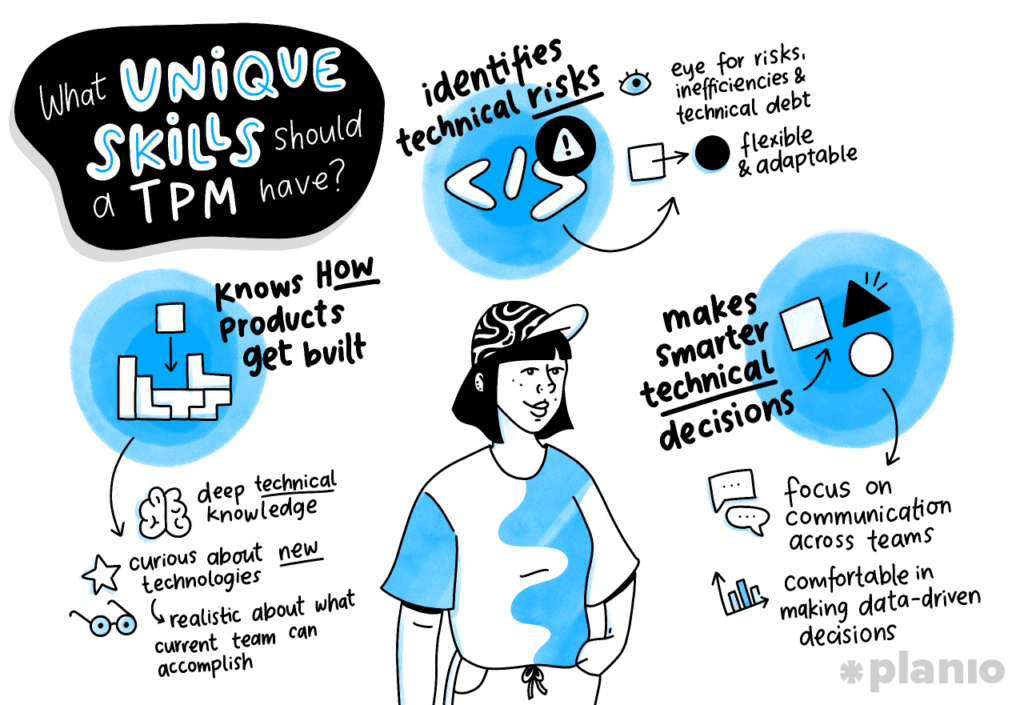This blog post explores the pivotal role of a Technical Program Manager (TPM) in modern tech organizations. It delves into who they are, what they do, and why companies need them to drive complex technical initiatives. We’ll also examine the origins of the TPM role, its uniqueness, and the skills required to excel in this dynamic position. Finally, we’ll highlight examples of how TPMs contribute to widely used tech products in startups and product firms.
Overview
The Technical Program Manager role is a relatively recent innovation in the tech industry, born out of necessity as companies began tackling increasingly complex projects requiring both technical expertise and cross-functional coordination. While there are differing accounts of its origins, many believe that Amazon and Microsoft were among the first companies to formalize this role. Microsoft introduced the Program Manager position over 20 years ago to address the growing complexity of its products and engineering teams. Similarly, Amazon experimented with roles like Technical Program & Product Manager (TPPM) to manage large scale technical initiatives.
Meta’s engineering team, for example, employs thousands of TPMs to oversee projects ranging from AI-driven tools to VR innovations. Similarly, startups like Stripe and Zoom leverage TPMs to scale their platforms while maintaining quality and efficiency. These professionals are not just project managers, they are technical strategists who bridge the gap between engineering teams and business goals.
Who Is a Technical Program Manager?
A Technical Program Manager is a hybrid professional with expertise in project management, technical knowledge, and strategic leadership. Unlike traditional project managers, TPMs have a deep understanding of technology and can engage with engineers on technical details while aligning projects with organizational objectives.
What Makes Them Unique?
- Technical Depth: TPMs possess enough technical knowledge to participate in architecture discussions and understand system designs without relying entirely on engineers.
- Cross Functional Leadership: They work across departments, engineering, product management, compliance, and more, to align everyone toward a common goal.
- Strategic Focus: Beyond execution, TPMs think strategically about how programs fit into broader business objectives.
- Problem Solvers: They anticipate risks, resolve bottlenecks, and ensure programs are delivered on time and within budget.
What Do Technical Program Managers Do?
The responsibilities of a TPM span the entire lifecycle of a technical program, from conception to delivery. Here’s a closer look at their core duties:
1. Program Planning
- Define program requirements by collaborating with stakeholders.
- Create detailed roadmaps that include timelines, budgets, and resource allocation.
- Break down large programs into manageable projects.
2. Execution Management
- Coordinate multiple teams working on interconnected projects.
- Ensure adherence to Agile or other project management frameworks.
- Oversee testing phases (technical QA, user QA) to meet quality standards.
3. Risk Mitigation
- Identify potential risks (e.g., technical debt or resource constraints) early in the process.
- Develop contingency plans to address issues without derailing timelines.
4. Improving Engineering Delivery
By focusing on specific domains such as mobile or infrastructure, TPMs help engineering teams maintain or improve their delivery pace through strategic planning and process enhancements
5. Driving Innovation
- Advocate for new technologies or processes that improve efficiency.
- Influence design decisions by understanding both technical constraints and business needs.
Why Do Companies Need Technical Program Managers?
In today’s tech ecosystem, where products are built at breakneck speed and involve multiple stakeholders, the need for TPMs has never been greater. Here’s why:
- Complexity Management: Modern tech products like Google Maps or Meta’s AI-driven tools involve hundreds of engineers working across multiple teams. A TPM ensures these efforts are coordinated effectively.
- Alignment with Business Goals: Startups like Stripe rely on TPMs to balance rapid feature development with long-term scalability.
- Efficiency Gains: By streamlining communication across teams and resolving bottlenecks proactively, TPMs save time and resources.
- Quality Assurance: Whether it’s ensuring Zoom’s video calls run seamlessly or Spotify’s recommendation engine works flawlessly, TPMs play a critical role in maintaining product quality.

Examples of Technical Program Managers in Action
1. Meta (Facebook)
Meta employs thousands of TPMs who oversee projects like scaling its AI infrastructure or developing AR/VR products like Oculus headsets. These professionals ensure that Meta’s ambitious goals align with its engineering capabilities.
2. Stripe
At Stripe—a leading payment platform—TPMs manage programs that integrate new payment methods globally while maintaining security standards.
3. Zoom
Zoom’s success during the pandemic was partly due to its ability to scale rapidly while maintaining call quality. TPMs played a key role in managing infrastructure upgrades under tight deadlines.
4. Spotify
Spotify relies on TPMs to coordinate cross-functional teams working on features like personalized playlists or podcast integrations.
5. Google Maps
Google Maps relies on TPMs to coordinate efforts across teams working on features like real-time traffic updates or street-level imagery.
Skills Needed to Be a Great Technical Program Manager
To succeed as a TPM, you need a blend of technical expertise, project management skills, and interpersonal abilities:
- Technical Knowledge:
- Familiarity with software development processes (e.g., Agile).
- Understanding system architecture and design principles.
- Project Management Skills:
- Expertise in creating roadmaps and managing timelines.
- Proficiency in tools like Jira or Trello.
- Leadership & Communication:
- Ability to influence without authority.
- Exceptional communication skills for bridging technical and non-technical stakeholders.
- Strategic Thinking:
- Aligning programs with long-term business goals.
- Balancing trade-offs between speed, cost, and quality.
- Problem-Solving & Risk Management:
- Anticipating challenges before they arise.
- Developing creative solutions under pressure.
Exploring Varied TPMs
The realm of TPMs is as varied as the tech industry itself, with roles tailored to specific areas of expertise and interest. Here are some of the types of TPMs one might encounter:
– Front End TPMs: Specializing in web, iOS, and Android platforms, they collaborate closely with designers and user experience teams to create intuitive and engaging interfaces.
– Backend TPMs: Focused on APIs, SDKs, and platform development, they handle core functionalities crucial to product integrity and performance.
– Cloud TPMs: Architects who facilitate infrastructure migration to the cloud, optimizing scalability and efficiency for modern tech needs.
– Security TPMs: Overseeing risk management, governance, and compliance to ensure robust, secure operations across products.
The Impact of Technical Program Managers
Technical Program Managers are the unsung heroes behind some of the world’s most widely used tech products, from Meta’s social platforms to Zoom’s video conferencing tools. They don’t just manage projects, they orchestrate harmony between engineering teams, product managers, and business leaders to deliver impactful results.
In an era where technology drives every aspect of our lives, TPMs ensure that innovation happens efficiently and effectively. Their ability to navigate complexity while keeping an eye on strategic goals makes them indispensable in modern organizations.
Behind every successful tech product is an invisible force, a Technical Program Manager turning chaos into clarity.





